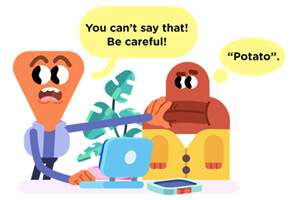How to Lead from Afar
New and old skills will be needed
When office workers were sent home in the spring of 2020, managers suddenly faced a new challenge: how to supervise teams that were working remotely. While employees are now gradually heading back to their desks, a much greater share will work from home at least occasionally than before the pandemic. A new book, “Leading at a Distance”, by James Citrin and Darleen Derosa of Spencer Stuart, an executive-search firm, attempts to provide some practical tips for managers dealing with staff whom they do not see face to face.
The authors are not in the gloomy camp that believes remote working is a disaster. They think it can be just as effective as face-to-face work. They point out that the ability to hire people who can work anywhere means that businesses will find it easier to develop more diverse workforces. A study by McKinsey, a consultancy, found that 70% of companies thought remote hiring would help in this respect.
The book offers some useful advice. For starters, keep virtual teams small. The upper threshold seems to be around a dozen. A study found that 37% of low-performing teams had 13 or more members, compared with just 24% of high-performing teams. In addition, the best-performing teams tended to be drawn from one department, such as marketing, rather than from across the firm.
The trickiest part of the manager’s job is building rapport. It is easy for remote workers to feel isolated so supervisors should be in regular contact. But it is a tricky line to walk. There is a difference between checking in to see if someone needs support and constantly monitoring their progress. If team members feel they are being nagged, they will conclude their superiors don’t trust them.
Much communication will be by email, which has its advantages. It is easily shared, can be read several times to aid comprehension and can be referred to long after it is sent. But email also introduces the risk that nuance is lost. The authors cite studies showing that emails perceived to be neutral in tone by the sender are seen as negative by the recipient; and recipients consider neutral those perceived by the sender to be positive.
Mr. Citrin and Ms. Derosa also warn of the dangers of virtual meetings. Just because it is possible to schedule one does not mean it is necessary or wise to do so. Poorly-run meetings do not just waste time, they jeopardise the ability to meet deadlines, adding to workers’ stress. Long meetings should have breaks, which the manager should take responsibility for enforcing. And any meeting should be 20 or 50 minutes long, rather than 30 minutes or an hour, to allow for a gap between sessions in an hourly schedule.
At times, the authors’ advice becomes a little generic. Virtual meetings should have one of four objectives, they argue: to solve problems, make decisions, to gain support or build relationships. Sadly, in Bartleby’s experience, an inventive manager could describe almost all meetings as conforming to at least one of these criteria. Later in the book, they describe the most important characteristics for virtual leaders as including “strong communications and interpersonal skills, initiative, flexibility and the ability to learn and adapt”. Surely, these are useful attributes for all leaders, whether operating remotely or not?
And some of the suggestions seem distinctly offbeat. As part of team-building, the authors propose that colleagues display pictures on their bookshelves or give a tour of the kitchen and tell the stories behind the items within it. Much as Bartleby would love to hear about Bagehot’s egg whisk or Schumpeter’s salad spinner, he hopes this idea does not catch on at The Economist. The same goes for the suggestion that virtual festive parties would be enlivened by having staff dress up, with a vote on the best outfit, or for colleagues to submit videos of their children or pets. Pet videos should be confined to YouTube.
A few things must change when people work remotely. But not everything does. Managers will need to make a more determined effort to keep in contact with their staff, but those who are good at listening, and who can empathise with how their team members are coping, should still be able to flourish. If, as most people expect, a hybrid model emerges with remote working a couple of days a week, there will be plenty of scope for interaction when managers and team members are both present. What office life doesn’t need is gimmicks. Work colleagues do not need to be treated like game-show contestants.














